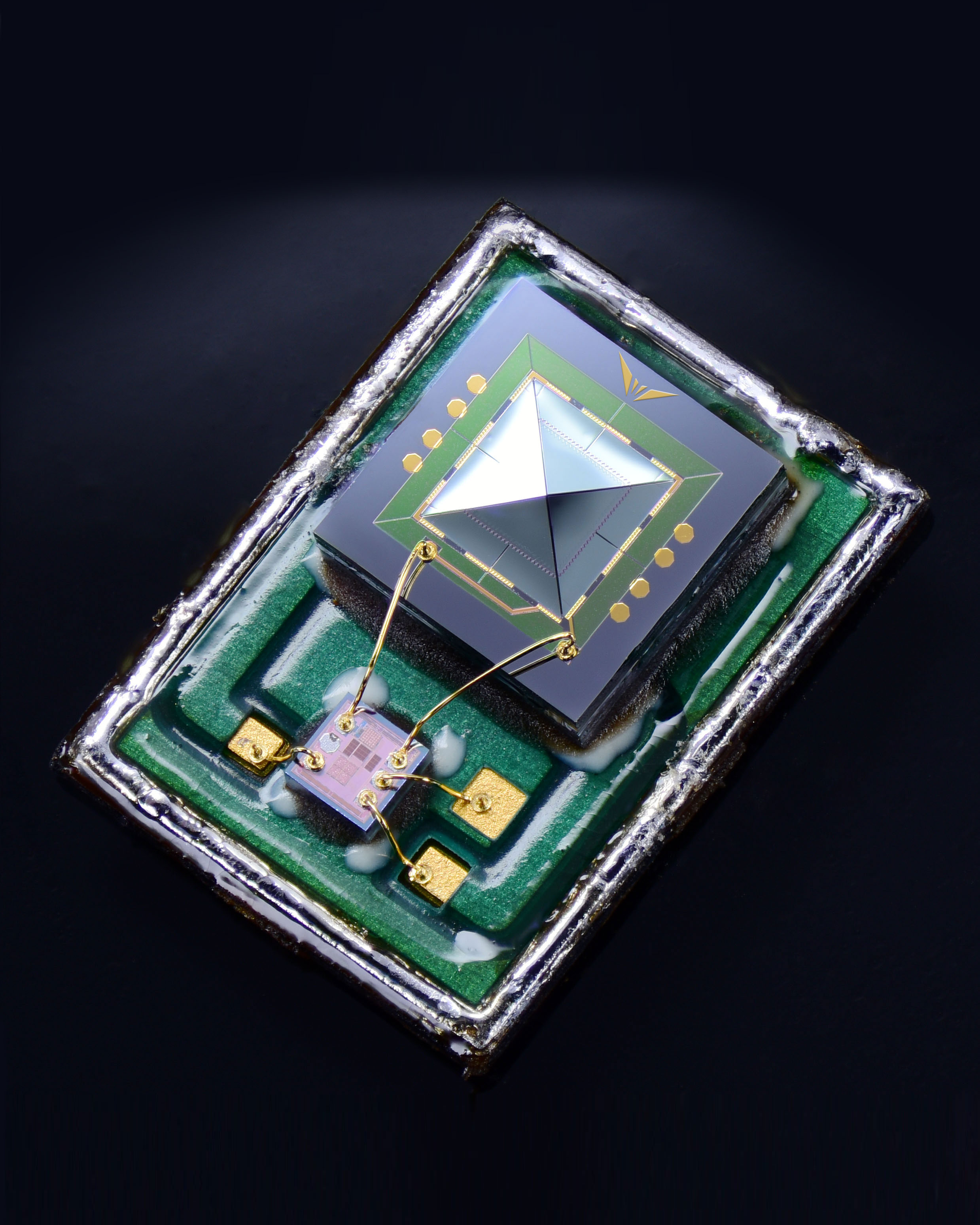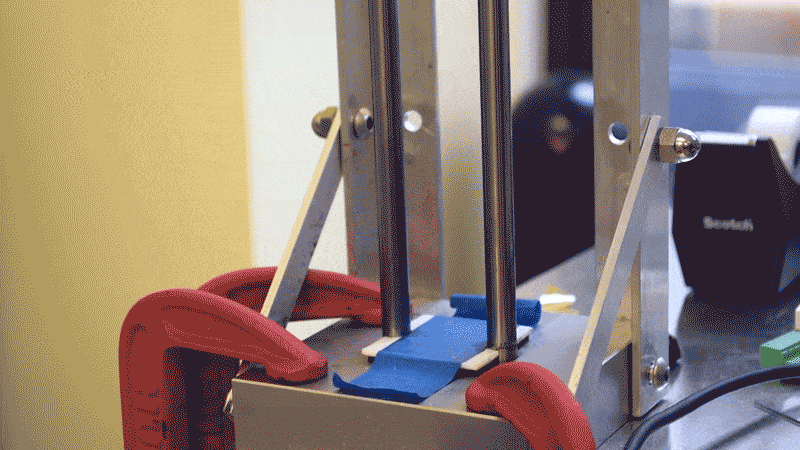These Tiny Microphones Will Make It Okay to Spill Beer on Your Amazon Echo

The proliferation of portable, voice-enabled gadgets like Amazon’s Tap speaker and Doppler Labs’s smart, wireless earbuds enables us to play music, search the Web, and answer phone calls around the house and on the go using verbal commands. But because these devices are susceptible to damage from dirt and moisture and last only a few hours per battery charge, we don’t use them as much as we might.
Boston startup Vesper has devised a solution: miniature piezoelectric microphones that use a cantilever structure to harvest energy from sound and promise to be more durable and energy-efficient than conventional microphones. Vesper says that once its microphones are incorporated into gadgets, which will happen later this year, we should be able to use our voice-enabled devices outdoors and in inclement weather with less worry, for days on a single charge.
To demonstrate its microphones' toughness, Vesper plunges them into beer and soda; envelops them in hot steam infused with cooking oil; subjects them to simulated dust storms; and drops them from heights onto hard surfaces (see videos above and below). The microphones, which are about the size of two sesame seeds laid side by side, aren’t indestructible, but they are water-, dust-, and shock-resistant and maintain similar performance after Vesper’s stress tests, whereas conventional microphones experience significant signal loss.
Conventional microphones measure sound using a flexible diaphragm that vibrates in proximity to a rigid backplate. The diaphragm requires a constant charge, and the air gap between it and the backplate leaves the microphone vulnerable to harm from particles and water (though companies guard against this by covering them with mesh and rubber membranes).

Vesper replaces the diaphragm and backplate with a single layer of flexible cantilevers made of aluminum nitride. When a soundwave comes into a Vesper microphone, it bends the cantilevers, sort of like a swimmer jumping on a diving board, and the stress generates electrical signals that can be translated into sounds.
Vesper also harnesses that sound energy to turn its microphones on—and turn them off in the absence of sound. In contrast, sound alone can’t activate conventional microphones if they are powered off. “Conventional microphones have to always have their mikes on and use digital signal processing to detect voices,” says Vesper CTO Bobby Littrell. “That uses a lot more power than our method, which basically tells [a gadget’s voice-interface] system that if there’s no sound it doesn’t need to do any of that computation.”
Vesper’s technology enables voice-activated battery-powered devices to be used hands-free for long periods of time; in contrast, today’s devices typically must be manually woken up with the push of a button to preserve battery life. The startup recently received funding from Amazon’s Alexa Fund. However, Vesper declined to say whether its microphones would appear in future Amazon electronics.
Researchers and companies started experimenting with piezoelectric MEMS microphones in the 1980s, but had a hard time identifying the right design and materials. Vesper is the first to commercialize the devices.
Experts caution that it’s still a challenge to consistently manufacture the type of piezoelectric material (aluminum-nitride film) that Vesper needs. “Aluminum-nitride transducers have been around for a long time, but it’s difficult to make a stable, low-stress film that’s uniform, high quality, and available for large volumes,” says Mark Sheplak, an engineering professor at the University of Florida who specializes in MEMS microphones. Film quality affects crucial microphone characteristics, such as sensitivity and noise level, he adds.

Others note that conventional microphones are good enough for most consumer gadgets, and cost-conscious device makers are unlikely to spring for Vesper’s more expensive technology. “Consumer electronics is all about cost and pricing,” says Farrokh Ayazi, who heads Georgia Tech’s Center for MEMS and Microsystems Technology. “Vesper has a good opportunity to be selected for newly designed devices, but it will be difficult for them to get into gadgets like smartphones where other microphone brands are well-established.”
Market research firm Yole Développement says Vesper’s technology is a match for smart home and wearable gadgets that need to be sturdy and power-efficient. It estimates the global MEMS microphone market is worth nearly $1 billion. Vesper says its “wake-on sound” microphone will appear in U.S. consumer gadgets before the end of the year.
Keep Reading
Most Popular
How scientists traced a mysterious covid case back to six toilets
When wastewater surveillance turns into a hunt for a single infected individual, the ethics get tricky.
The problem with plug-in hybrids? Their drivers.
Plug-in hybrids are often sold as a transition to EVs, but new data from Europe shows we’re still underestimating the emissions they produce.
Sam Altman says helpful agents are poised to become AI’s killer function
Open AI’s CEO says we won’t need new hardware or lots more training data to get there.
Stay connected
Get the latest updates from
MIT Technology Review
Discover special offers, top stories, upcoming events, and more.